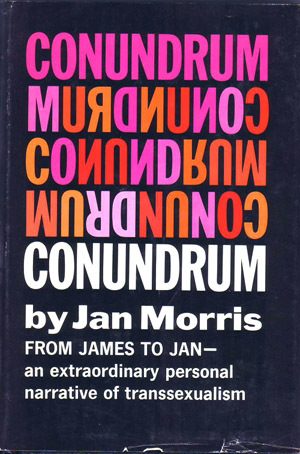In 1974, for the first time in South Africa’s history, a law recognising the rights of transsexuals was passed. The Births, Deaths and Marriages Registration Act 51 of 1974 provided the legal foundation for—ostensibly white—South Africans who had “undergone a change of sex” to alter their “sex description” in the country’s birth register. The discussion in the South African parliament made several points clear: this was a matter that those present felt sympathetic towards; there was a sincere belief that an individual was able to change sex, but only with the assistance of medical professionals; and members agreed that legislation should be put in place to assist, rather than aggravate, this process. Furthermore, there was a very clear understanding that the political State should have control over the designation of “correct” sex.
The passing of this law is a deeply curious incident in the history of Apartheid South Africa. Firstly, given the fiercely racist, Calvinistic, homophobic, militarised and heteropatriarchal structural and political make-up of the country at the time, it seems almost counterfactual that the Parliament treated transsexuality with such sympathy. Secondly, as a former British and Dutch colony on the African continent, South Africa was the only country to pursue this particular form of state-sanctioned medical intervention. Lastly, sex change at the time was largely used by the state as a curative for homosexuality. It may seem logical to make this link, particularly given that countries, such as Iran, do so presently, but it remains unclear why the state would have been amenable to this idea in the first place.
Even more curiously, the discussion in the country’s parliament was marked by the kind of informed dialogue that many countries today have yet to cultivate. Amanda Lock Swarr has suggested that the rigid nature of the apartheid state along with its obsessive codifying of categories may somewhat explain the amendment. Though useful, this is not enough to explain the amenability of the state to the idea of transsexuality, even as a proposed ‘curative’ intervention. I see that one of the key elements missing from this discussion regarding the amendment has been the question of the socio-cultural construction of race in South Africa. I argue that the history of transsexuality in South Africa as something legally sanctioned and state facilitated is also simultaneously a history of colonial imperialism. I suggest that we need to consider the presence of a ‘colonial artefact’—mentioned by Parliamentarians as having informed some of their understanding—in the shape of Jan Morris’s international bestseller, Conundrum.

Journalist, travel writer and “elegist of the British Empire,” Morris became a worldwide celebrity when she underwent sex reassignment surgery in North Africa in 1972. Subsequent to her transition she released one of the first transsexual memoirs, Conundrum (1974). In the book, Morris’s account of transsexuality is organised around a colonial framework—drawing parallels between her own metaphorical journey to (white) womanhood, or ‘identity’, and her physical journeys as a travel writer. Given both the subject matter and Morris’s particular prominence as one of the great British ‘gentleman’ explorers (a member of the “emblematically powerful” British group to first summit Everest), the book was an international bestseller.
As a “narrative of colonial melancholy,” Conundrum works to equate transsexuality with travel, and embodied sex with place. This sense of place is aligned to an “immutable and essential” gender, national belonging and, by extension, race. Maria Lugones uses the ‘coloniality of gender’ to explain how sex, and the imposed values and norms of gender, have historically been co-constructed with those of race. This ideological relationship, she suggests, has been pivotal to the broader system of imposed colonial control and its accompanying narrative of modernity. For the deeply coercive project of colonialism, there has been a stark contrast in the meaning, value and construction of gender for “Europeans/whites and colonised/non-white peoples.” The European notion that sex is biologically dimorphic, easily determinable and linked to gender is central to coloniality. In this imperial framework, properly sexed heteronormative beings are the inhabitants of the ‘light side’ (read white side) of coloniality, while those in Lugones’s ‘dark side’ (colonised others) are savagely disruptive to this.
It is this control over sex in relation to race and gender, as an element of Apartheid nationalist ideology, that is crucial. Within Conundrum, Morris situates Africa as a largely monstrous and homogenous entity, one from which she draws particular race-based understandings regarding sexed rightness, place and colonial whiteness. Weaving transsexuality with a discourse of white settler colonialism, ‘Black Africa’ functions as a narrative tool used to explain the kind of monstrousness with which Morris comes to regard her own gender liminality. The deployment of these tropes concomitantly reinscribes Europe (and by extension Europeans) as the place of white, properly sexed and enlightened epistemological and ontological life. As Morris explains: “Black Africa seemed everything I wanted not to be … I found the black African as incomprehensible as a man from the moon.” This ‘not’ is critical. While in the preceding chapter of Conundrum the feminine joys of Venice are imbued with a particular romance linked to European enlightenment and intellectual superiority, Africa is read as dark, barbaric, backwards, incomprehensible, mystical, masculine and loathsome. In her words, “I had disliked the continent always.”
Africa serves as an analogy for the ‘place’, the gendered allegiance, Morris wishes to do away with. Venice serves to show what is to come. This is not only a place-based metaphor, but one that is also inflected with colonial ideas regarding race and sex. ‘Black Africa’, a particular designation used by Morris, functions as a racial identity rooted in European coloniality. Morris’s metaphor does the spectacular work of anchoring transsexuality, in European colonial constructs of Empire, immutable gendered whiteness and sexed rightness.

Morris was not unknown to South Africans. She had travelled the country in the mid-1950s at the behest of the Guardian newspaper, appearing as someone sympathetic to the racial dynamics of the country. In A South African Winter (1958), the book that would be published subsequent to this trip, Morris states, “I can see no reason at all … why the Europeans of South Africa should admit all the Africans to political equality.”
The twin cornerstones of Apartheid South Africa, according to Mikki van Zyl et al, were “white Afrikaner nationalism, and a rationale for it based on Christianity as interpreted by the major Afrikaner churches.” The fervent reinforcing of the heteropatriarchal order was paramount, as was racial separation. Within this framework, according to Neville Hoad, sex was understood as crucial to the state’s “national and social as well as racial definition.” Deviance from this—for instance, in the form of same sex relations—was considered a sign of disloyalty to the state. As Louise Vincent and I note, sex change surgery was offered by the Apartheid state since at least the 1960s as an acceptable means of reinstating heterosexual desire by realigning sex with gender. Critically, this manipulation to ensure heteronormative congruence was aimed at white bodies.
Conundrum, as mentioned in parliament, functioned as a point of reference used to acknowledge that changing sex, “though it might appear strange,” was indeed realistic and attainable. This argument was underpinned by the fact that Morris, “the British journalist who had accompanied the Everest expedition … [had] … now become a woman.” Implying the further impact of Conundrum, it was stressed that the matter of changing sex had been thoroughly investigated. Given this, it was the state’s sincere position that the “path through life” for “these [white] people” should be made easier. Morris’s book, for South African parliamentarians, structured transsexuality as a “terribly real problem,” which if left inadequately facilitated would function as a terribly real threat to white superiority.
Morris’s writing was almost too perfect in its white imperial characterising of “gender identity in terms of countries but also natural identities in terms of gender.” Reinstating Lugone’s argument regarding coloniality, the idea that both heteronormativity and white purity, Lugone’s light side, could be shorn up against the ever-present threat of both homosexuality and unruly Black African liminal sexuality, the dark side, was key.
Indeed, state-sanctioned sex change and transsexuality, in South Africa, was not only a cure for homosexuality, but was also a means through which to address the interlocking conundrum of how to maintain white racial purity and superiority, linked as it was to the heteropatriarchal structural make-up of Apartheid. It is this control over sex (and its resources), as a matter of nationalist ideology that I argue was critical to raced-based understandings of gender and heteronormativity for the South African state.
 B Camminga received a PhD from the Institute for Humanities in Africa (HUMA), University of Cape Town. Their research interests include: transgender rights, migration, asylum and diasporas; necropolitics, notions of privacy and the bureaucratisation of sex/gender; and the history of ‘trans phenomena’ in South Africa. They recently published “Categories and Queues: The Structural Realities of Gender and the South African Asylum System.” Their current book project, Beyond the Mountain: Queer Life in Africa’s ‘Gay Capital’ with Dr. Zethu Matebeni, explores the conflicting iterations of race, sex, gender and sexuality that mark the city of Cape Town. They tweet from @obsqueer.
B Camminga received a PhD from the Institute for Humanities in Africa (HUMA), University of Cape Town. Their research interests include: transgender rights, migration, asylum and diasporas; necropolitics, notions of privacy and the bureaucratisation of sex/gender; and the history of ‘trans phenomena’ in South Africa. They recently published “Categories and Queues: The Structural Realities of Gender and the South African Asylum System.” Their current book project, Beyond the Mountain: Queer Life in Africa’s ‘Gay Capital’ with Dr. Zethu Matebeni, explores the conflicting iterations of race, sex, gender and sexuality that mark the city of Cape Town. They tweet from @obsqueer.
Series Editors: Rachel Hope Cleves, Alexie Glover, and Scott Larson
How does trans history fit into the history of sexuality?
During the late 1980s and early 1990s, activists and scholars like Gayle Rubin, Eve Kosofsky Sedgwick, and Joan Wallach Scott sought to distinguish gender and sexuality as distinct frames of inquiry. This development followed a century of debates about the emergence of sexual identities. Rubin, Sedgwick, and Scott’s distinctions between gender and sexuality profoundly shaped emerging queer theories. These distinctions also allowed, and sometimes forced, Transgender movements to frame transgender liberation as distinct from Lesbian and Gay movements for inclusion. Yet the study of trans histories remain entangled with, and vital to, the study of the history of sexuality.
Considering this history of entanglement and distinction, we ask: Do all trans histories belong within the history of sexuality? Are there some trans histories that are best understood outside the framework of sexuality? NOTCHES’ new four-part trans series looks to begin a longer conversation about these questions. The next four posts, beginning with today’s piece by B. Camminga, range in time and place from twentieth-century South Africa through to Ancient Rome, and the United States. These pieces demonstrate Susan Stryker’s assertion that “transgender issues touch on fundamental questions of human existence, they take us into areas that we rarely consider carefully.” The topics covered by the pieces reveal how trans history can speak to a range of themes beyond sexuality, including colonialism, racial construction, law, medicine, and the ways that gendered language shapes archival research and writing at its most basic level.
The series is intended to invite increased discussion of trans history at NOTCHES. We hope that readers of the blog will approach these posts as the opening gambit in a discussion to be continued. Trans histories are accepted on an ongoing basis.

NOTCHES: (re)marks on the history of sexuality is licensed under a Creative Commons Attribution-NonCommercial-NoDerivatives 4.0 International License.
Based on a work at www.notchesblog.com.
For permission to publish any NOTCHES post in whole or in part please contact the editors at NotchesBlog@gmail.com





Thanks for a very interesting article…I as an ex- transsexual myself, underwent surgery during the sixties and can identify with most of your writing…
I may even, if you allow me to say this, enlight you on several disastrous results of som unfortunate candidates due to experimental procedures…if you’re thinking of a follow up article.
Yours faithfully